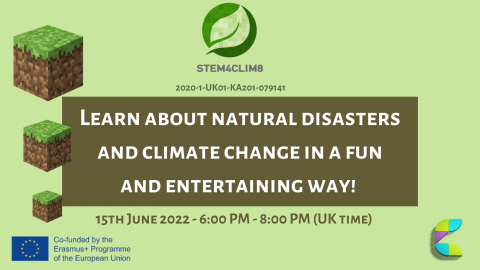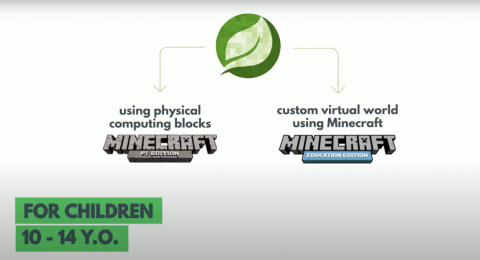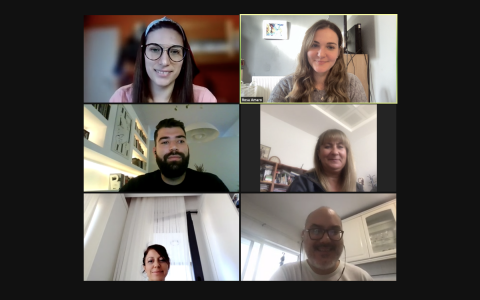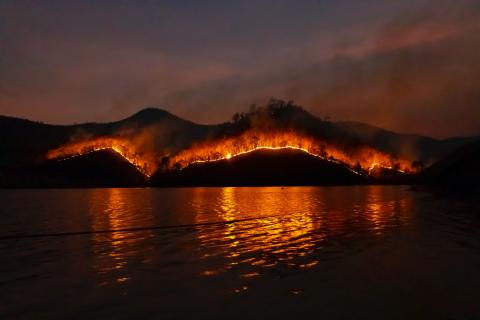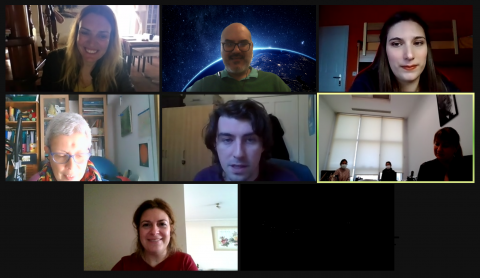GET READY FOR CLIMATE CHANGE WITH STEM4CLIM8
The phenomenon of digitalisation is profoundly changing the way we learn and work. Children entering school today need to acquire a set of different skills. Preparing students for the future requires that we must not only make sure that they have the right technical capabilities but that we also have to strengthen their emotional and social skills. Children should have the capacity to overcome adverse circumstances and use them correctly as sources for personal development. This is the core of the successful adaptation to change and the active engagement with the digital world. Children qualified with scientific and technological literacy can overcome more easily internet addiction which is an emerging problem of the new era.
The STEM approach, which is one of the current most-frequently-used teaching approaches, can bridge physical computing with environmental consciousness while focusing on off-screen collaborative activities and proves to be useful way of improving technical capabilities while strengthening emotional and social skills. At the same time, teachers who instruct children on the above-mentioned skills should have already acquired these skills. Nevertheless, a recent OECD survey covering 25 European countries [1] showed that almost all countries reported shortfalls of skills that teachers need in meeting modern school needs, as well as difficulties in teachers’ upskilling.
The STEM4CLIM8 project was developed, taking into account all necessities within science education. The project will produce approaches and tools to help those working with secondary school children (ages 10-14 years), promoting engagement with programming and developing STEM-related skills. It aims to achieve this not by increasing screen time. The project will achieve this by encouraging hands-on and minds-on play through the creation of a custom virtual world using Minecraft modding and the execution of missions dealing with natural disasters. Physical computing blocks will be programmed to interact with the virtual world through the Raspberry GPIO microcomputer. The missions will reveal the science behind natural phenomena that are frequently associated with climate change and inspire the children with environmental consciousness while at the same time help them enhance STEM skills.
Why focus on climate change in this project? It is, undoubtedly, one of the terms we hear the most in the 21st century. So, what is meant by “climate change”? Our planet makes life for us possible thanks primarily to its atmosphere. That is to say, while almost half of the sun rays are absorbed by the Earth, the other half is reflected back to space. Gases such as methane, water vapor, carbon dioxide, ozone, and nitrogen oxide in our atmosphere send some of these reflected rays back again to the Earth and thus a viable environment temperature is attained. This warming event on the Earth is called the greenhouse effect, and the gases that cause this warming are called greenhouse gases.
The increase in the volume of greenhouse gases in the atmosphere causes the Earth to get warmer. So how does the volume of greenhouse gases in the atmosphere increase? Studies have shown that the amount of greenhouse gases has increased due to the increase in the world population, technological developments and human activities brought about by industrialization. Many studies have shown substantial CO2 increase as a result of the use of fossil resources such as coal, oil and natural gas. As a consequence, global temperatures have been reported to rise in recent years due to the effect of greenhouse gases.
Why should we worry about the Earth's warming? While climate change causes an increase in temperature, it also causes an increase in the severity and frequency of some natural events such as floods, hurricanes and droughts. In addition, it may cause melting of glaciers, ocean and sea-level rise, and disturbance and even loss of the in aquatic habitats. Therefore, global warming is a threat to all forms of life on our planet.
In order to minimize these destructive effects of climate change, countries have collectively proposed solutions and signed various agreements of international importance (the United Nations Framework Convention on Climate Change - UNFCCC, the Kyoto Protocol, , etc.). However, these agreements have forced the countries in practice only up to a certain point. It is crucial to ensure that the existing agreements are sustainable. For this reason, it is necessary to raise awareness among younger generations of the physical disasters caused by unconscious activities of the population and to educate them on how to deal with these, as the main objectives within the STEM4CLIM8 project.
Concerning other outcomes of the STEM4CLIM8 project, a knowledge dissemination portal will host the exclusive lesson plans to provide ideas and guidelines on the proper exploitation of the project outcomes in STEM-related courses. Each partner country will arrange pilot promotional events to use all of the tools in real-time. The "STEM4CLIM8 Club" will be used as a supportive online space for those interested in the project, and for those who would like to reach other users and share their opinion and difficulties. Participating teachers will help shape the Club as initial users. Based on their feedback, the final version of the Club will be launched to the general public.
The STEM4CLIM8 project consortium consists of:
• CIVIC COMPUTING (applicant organisation),
• PAMUKKALE UNIVERSITY (PAU),
• ATERMON B.V.,
• HEARTHANDS SOLUTIONS (HESO),
• NUCLIO NUCLEO INTERACTIVO DE ASTRONOMIA ASSOCIACAO, and
• SILOGOS GONEON & KIDEMONON 2Ο DIMOTIKO PORTO RAFTI (SPR).
The project officially started on 01/11/2020 and has a duration of 24 months.
The project activities completed by March 2021 are the realisation of the kick-off meeting (February 2021), and preparation of the STEM4CLIM8 Console Assembly Guide. The STEM4CLIM8 Console is designed so as to be possible to assemble in the classroom by the students under the supervision of the teacher. It is expected that children will be able to assemble the STEM4CLIM8 Console themselves based on the instructions.
The STEM4CLIM8 Console imitates an all-in-one desktop computer, offering ease of use in the classroom as it will not be necessary to connect to an external screen to use it while it will be easier to connect external kits and electronics for physical computing and enhancement of STEM-related teaching.
YOU CAN FOLLOW US FROM STEM4CLIM8 SOCIAL MEDIA! 😊
(Facebook: https://www.facebook.com/Stem4clim8-111447450996523 ,
Twitter: https://twitter.com/stem4clim8)
References
1. OECD Education and Skills Today, (OECD, 2018, January 29), retrieved from https://oecdedutoday.com/succeeding-with-resilience-lessons-for-schools/




